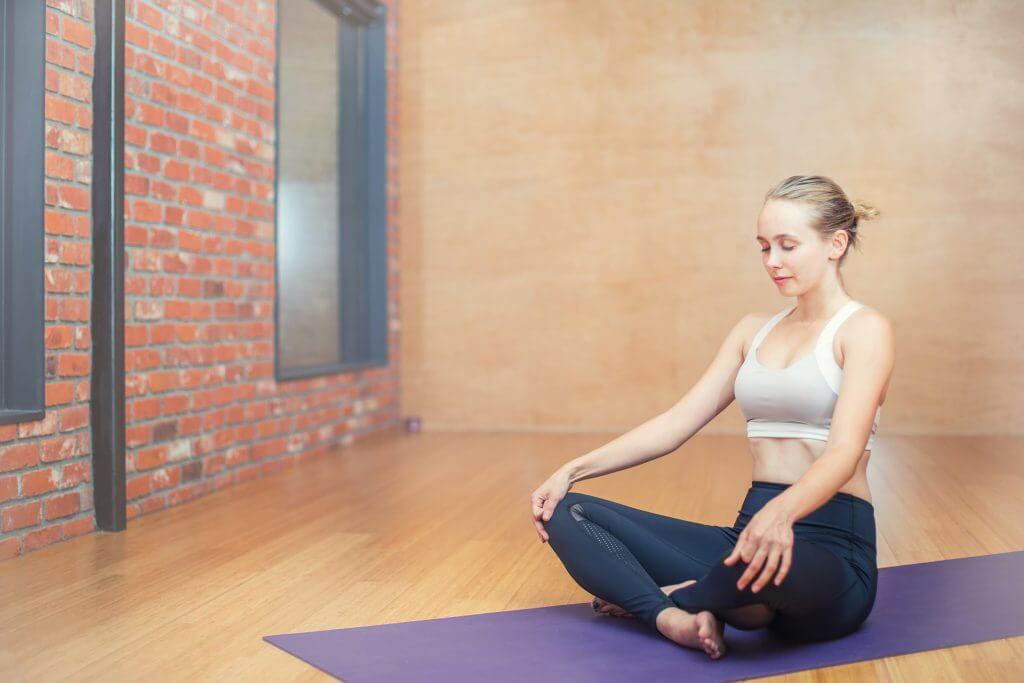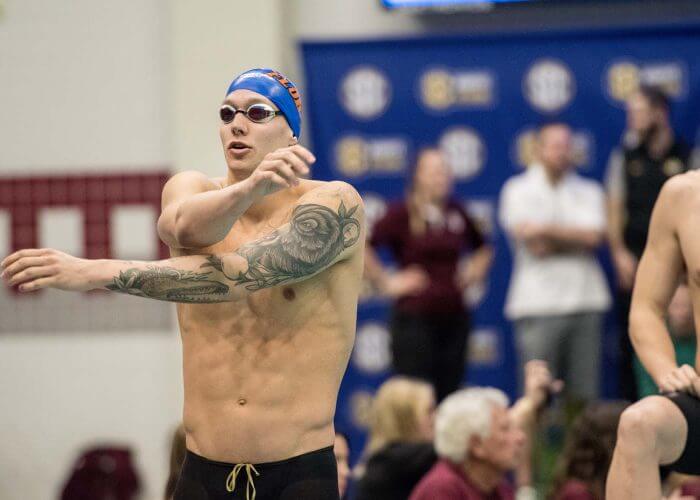How Yoga Breathing Can Boost Race Performance

By Madilyn Sindelar, Swimming World College Intern.
Standing behind the blocks while swinging your arms and legs, sizing up your competitors and slapping your muscles are all a part of one’s physical preparation for a race. Yet it can be challenging to find the right mental space when standing behind the blocks, counting down the heats until it’s your turn to take your mark. This leaves space to begin questioning yourself and getting psyched out of the race, which ultimately leads to poor performance. If you are one who needs to work on mental preparation for performance, then yoga breathing is the practice for you.

Carolina Swim Camps
When thinking of yoga, the physical improvements usually come to mind. Yoga helps stretch overworked muscles, gain flexibility and strength. It is a great form of core strengthening which includes your back muscles. Practicing yoga also allows flexibility and stronger muscles to aid in the reduction of injury; however, it is so much more than just physical movements. The breath is the key to unlocking yoga’s true power.
Another one of the major benefits of yoga is within the very foundation: positive affirmations. This breathing style focuses on self-love and acceptance of one’s body. Breathing in through the nose and out through the mouth allows for proper meditation and focus that the body and mind need before a race.
The relationship between breath, adrenaline and mental focus.

Photo Courtesy: Thomas Campbell/Texas A&M Athletics
When stressed – a normal feeling before a big race – your fight or flight response is automatically revved up. However, focusing on one’s breath through breathing techniques brings focus back on the here and now – the race itself – instead of potentially stressful outcomes.
Yoga breathing steadies your heart rate, which enables you to keep focused and present. When you are focusing on the breath, it allows your mind to be clear of future-thinking and grounded in the present. After the race, the breathing will also allow you to cool down quickly and your heart rate to return to normal.
“Pranayama [yoga breathing] offers a proven countermeasure: to take deep and slow breaths to initiate the parasympathetic nervous system to induce calmness in your body as well as in your mind. Deep breathing allows more oxygen to enter your body… helping to relieve the pressure on the neck and upper chest muscles,” according to BillYoga from Ozark Mountain Yoga.
Swimmers can begin to incorporate yoga-style breathing into any stressful situation, allowing them to calm their nerves and focus on the positives. Focusing on deep breathing and creating positive thoughts can hone the nerves that overcome one’s body into performance-enhancing energy. When deep breathing and focusing on the upcoming race, remind yourself of the countless laps you have swum and hours spent lifting weights. Trust in your training. You are prepared for this race, right here and now.

Photo Courtesy: Amy Golas
“During a stressful or fearful situation, the hypothalamus is activated. The hypothalamus is chiefly responsible for maintaining the body’s homeostasis, or stable physiological balance. It’s involved…the body’s balance between stress and relaxation. The latter is your sympathetic nervous system at work—the so-called ‘fight or flight’ response,” according to Jordan Gaines Lewis, Ph.D.
The basic physiology behind race-time adrenaline is this: The hypothalamus directly impacts the body’s adrenal glands, which in turn secrete hormones that aid in bursts of energy needed for race time. Epinephrine, otherwise known as adrenaline, is a major hormone released into the circulation and shunts the blood away from the gut and toward working muscles needed for high performance. This excess blood flow brings in precious oxygen and removes metabolic waste products from fast swimming.
A second function of adrenaline is that it activates our storage of carbohydrate energy (called glycogen) into readily-usable sugar (glucose). This provides more energy to swim fast.
While this is a desirable result, some swimmers struggle with an over-active fight or flight response far before the event, which exhausts your physical and mental energy. Using yoga breathing can help focus the nerves and decrease the energy-sapping stress levels until needed.
Yoga breathing can lead to increased mobility.

Photo Courtesy: Williams College Athletics
During a race, focusing on details is critical to an athlete’s success. Yoga breathing is similar to a form of mediation and can help the swimmer feel centered and the mind calm. Often in stressful situations, you will find that people hold their breath. Using your breath before, during and after a race allows your mind to stay clear of other thoughts and bring precious oxygen to the recovering muscles. This keeps a swimmer relaxed which can also improve success, since stress can cause muscle tension and restriction.
“Most don’t realize [breathing’s] reciprocal impact on our overall posture and mobility. Bad breathing creates tension and immobility, and immobility and tension prevent good breathing,” according to Dana Santas, the creator of Radius Yoga Conditioning, a yoga style designed to help athletes move, breathe and focus better.
While simply taking a few deep breaths won’t work, focusing on the biomechanics of the diaphragm can lead to results. Santas explains:
“When the diaphragm isn’t being used properly for respiration, it becomes dysfunctional in its postural role, too, pulling into its attachments to your lumbar spine, causing disc compression. This chain reaction of tension from improper breathing doesn’t just hurt and make it harder to move, it increases your risk of back, neck and shoulder injury.”
Using the mixture of stress and nerves before a race and the release of tension that comes with the deep breathing from yoga, an athlete can create the crucial adrenaline needed to fuel them for the race.
Using breathing techniques to increase lung capacity performance.

Photo Courtesy: Ann Wigger
While elevated energy levels are vital, another benefit to the process of deep breathing is being able to use your lungs at their fullest capacity.
“This technique helps you to breathe fully instead of taking shallow breaths. It can also help in lowering the heart rate back to normal, which goes up in situations of stress or when you are exercising,” according to Ozark Mountain Yoga.
Every swimmer knows the importance of air when it comes to a race. Efficient breaths are crucial to every race. When something as simple as breathing can make or break the race, maximizing one’s lung volume is imperative in order to ensure that fewer but efficient breaths are taken.
When preparing for a race that tends to make you nervous, try out these breathing patterns. These can help to maximize your lung capacity and reach the relaxation needed to overcome nerves before a race:
- Breathe out entirely through your mouth, making a whoosh noise.
- While counting to four, breathe in without a sound through your nose.
- Hold your breath until the count of seven.
- For a count of eight, breathe out entirely through your mouth making a whoosh noise.
Several other breathing techniques exist to energize, focus, or relax you. Let us know which breathing method works best for you!
-All commentaries are the opinion of the author and do not necessarily reflect the views of Swimming World Magazine nor its staff.




Great article!
Really liked it! Will try this technique before next meet
What a great article, enjoyed reading how yoga breathing can help swimmers!
Dylan Green
Dianna Smojver Short
Systema breathing practice is superior…
It is great feeling that how we can benefited to yoga at the time of swimming training or the performance. Need to take it seriously and main components of your tarining sessions .
Paige Bower